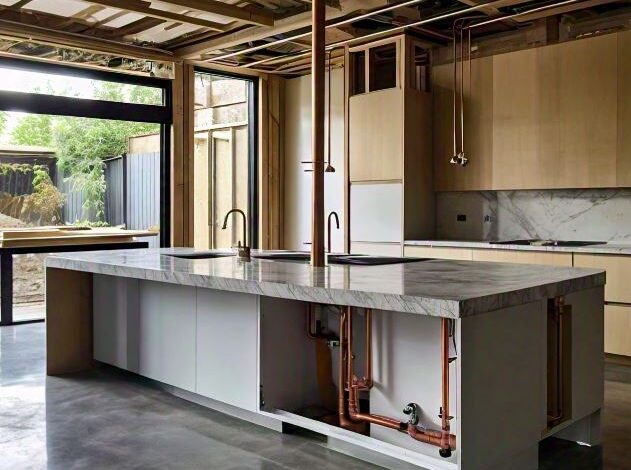The Singular Advantages of Rough-In Plumbing

Rough-in plumbing, often an understated phase in construction, harbors a plethora of benefits that ensure the robustness and longevity of a building’s plumbing system. Delving into its distinct advantages can illuminate its pivotal role in the realm of construction and renovation.
1. Foundational Integrity
Rough-in plumbing sets the stage for the entire plumbing system. By establishing the primary water and waste routes, it ensures that the foundational elements of the plumbing are meticulously aligned. This stage involves precise installation of pipes, vents, and drains, which are crucial for the subsequent installation of fixtures.
2. Cost Efficiency
Investing in rough-in plumbing during the early stages of construction can save substantial costs in the long run. Properly executed rough-in plumbing minimizes the risk of leaks, pipe bursts, and other plumbing mishaps that can lead to expensive repairs and water damage. Additionally, addressing potential issues during this phase is often less costly than making corrections after walls and floors are fully constructed.
3. Streamlined Construction Process
Rough-in plumbing provides a clear roadmap for the construction team. With the main plumbing lines already in place, other trades such as electrical and carpentry can proceed with their work more efficiently. This orchestrated approach reduces the likelihood of delays and ensures a smoother overall construction timeline.
4. Enhanced Property Value
Homes and buildings with well-executed rough-in plumbing are inherently more attractive to buyers and investors. The assurance that the plumbing system is sound adds to the property’s value and can be a significant selling point. Prospective buyers often seek properties with a reduced risk of plumbing issues, making this an invaluable asset.
5. Future-Proofing the Plumbing System
Rough-in plumbing lays a flexible groundwork that can accommodate future modifications and expansions. Whether adding new fixtures or reconfiguring existing ones, a well-planned rough-in phase allows for easier adjustments without extensive and invasive work. This foresight ensures that the plumbing system can evolve with the needs of the property.
6. Code Compliance and Safety
Adhering to building codes during the rough-in phase is essential for ensuring the safety and legality of the plumbing system. Rough-in plumbing must meet specific standards to prevent issues such as backflow, contamination, and inadequate drainage. By complying with these codes early on, the integrity of the plumbing system is maintained, safeguarding the health and safety of the occupants.
Conclusion
Rough-in plumbing is more than just an initial step in the construction process; it is a cornerstone that underpins the efficiency, safety, and longevity of the entire plumbing system. Its benefits, ranging from cost savings to enhanced property value, underscore its critical role in building and renovating structures. By prioritizing meticulous execution during this phase, homeowners and builders alike can ensure a resilient and adaptable plumbing system for years to come.



